
Morphology is compared between Stimdromia lateralis, and Carpilus convexus. Carpilus convexus is species that belongs to the Brachyura like the Ridged Sponge Crab, however, its under the family Carpiliidae.
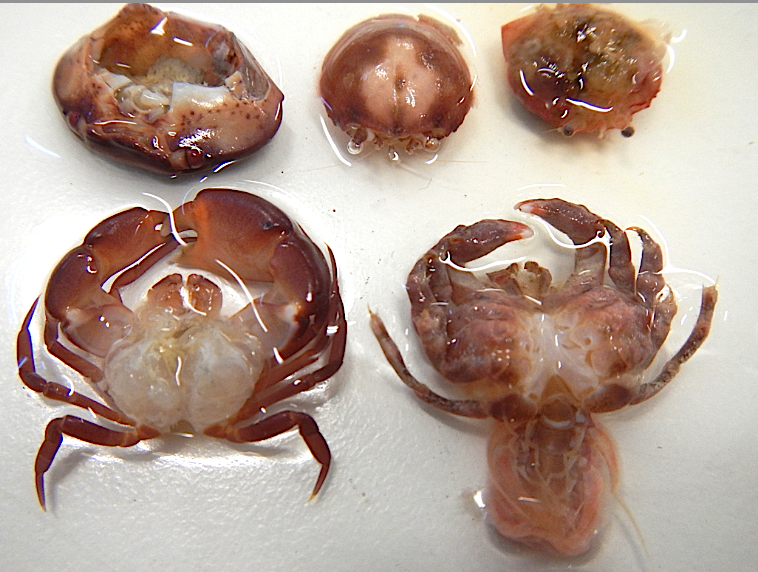 The shape of the carapace is significantly bigger and wider in the Carpilus convexus than the Stimdromia lateralis. Eyes of the Carpilus convexus are bright red, while the eyes are dark in Stimdromia lateralis. Dimorphism in chelipeds are experienced in Carpilus convexus. Walking legs are more elongated and branching from the sides of the body in Carpilus convexus while in Stimdromia lateralis, the legs are pushed under the body.
The shape of the carapace is significantly bigger and wider in the Carpilus convexus than the Stimdromia lateralis. Eyes of the Carpilus convexus are bright red, while the eyes are dark in Stimdromia lateralis. Dimorphism in chelipeds are experienced in Carpilus convexus. Walking legs are more elongated and branching from the sides of the body in Carpilus convexus while in Stimdromia lateralis, the legs are pushed under the body.
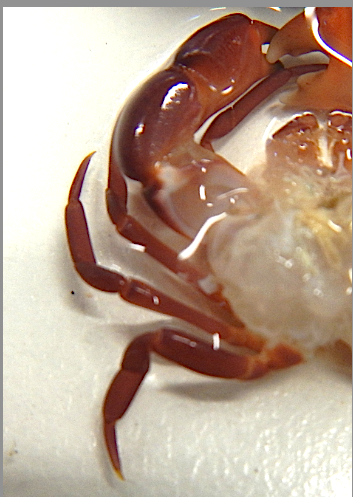 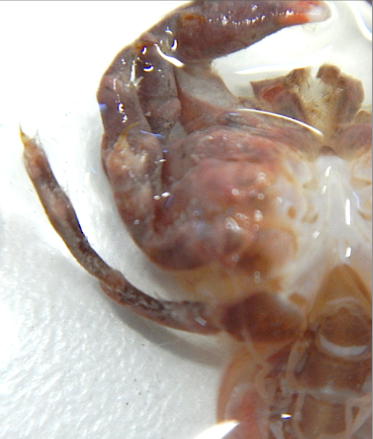 Notice the last pereiopods of the two species on the above images, in Carpilus convexus, the last pereiopod is pointing downwards, while in Stimdromia lateralis, the last pereiopod is bent upwards.
Notice the last pereiopods of the two species on the above images, in Carpilus convexus, the last pereiopod is pointing downwards, while in Stimdromia lateralis, the last pereiopod is bent upwards.
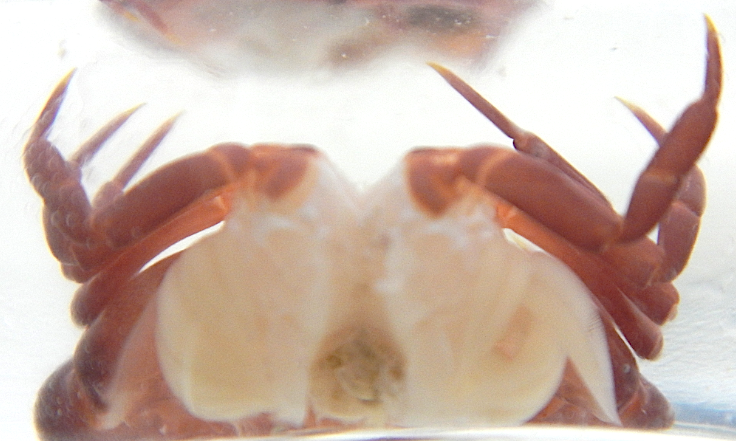 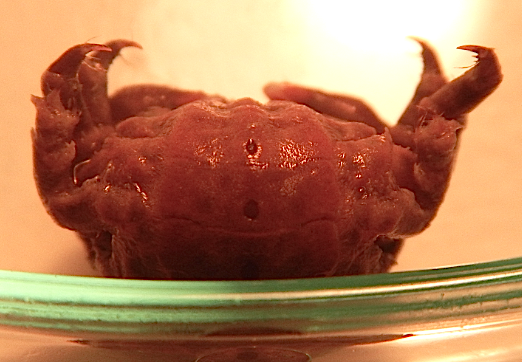 From posterior view of the two species, the difference in the thickness of legs can be clearly seen. The appendages are also tuck closer to the body in Stimdromia lateralis.
From posterior view of the two species, the difference in the thickness of legs can be clearly seen. The appendages are also tuck closer to the body in Stimdromia lateralis.
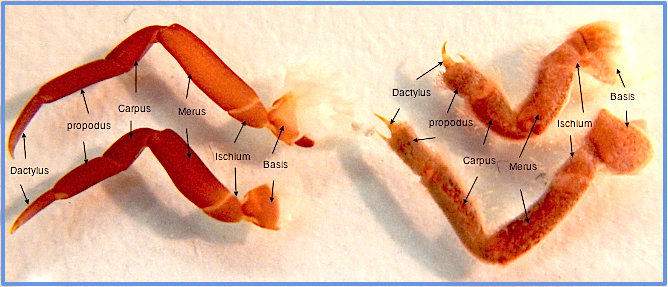 A labelled photograph of the last two pairs of pereiopods of both species. The surface of legs of Stimdromia lateralis are densely ciliated, while in Carpilus convexus, the surface of legs are smooth. The dactylus of the last two pairs of pereiopods of the Stimdromia lateralis have sub-chelie features.
A labelled photograph of the last two pairs of pereiopods of both species. The surface of legs of Stimdromia lateralis are densely ciliated, while in Carpilus convexus, the surface of legs are smooth. The dactylus of the last two pairs of pereiopods of the Stimdromia lateralis have sub-chelie features.
The joints between appendage segments are also dissimilar.
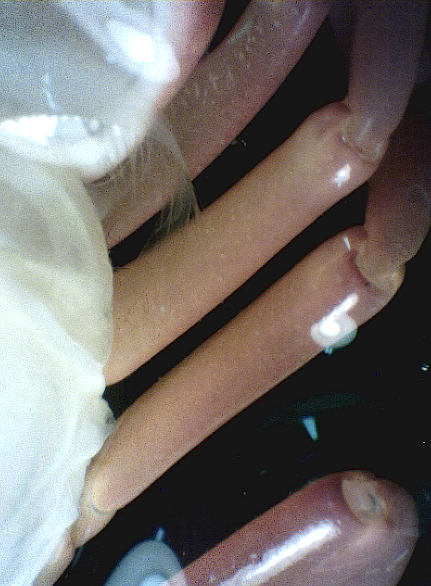 In Carpilus convexus, the joints between segments are less obvious and protruded.
In Carpilus convexus, the joints between segments are less obvious and protruded.
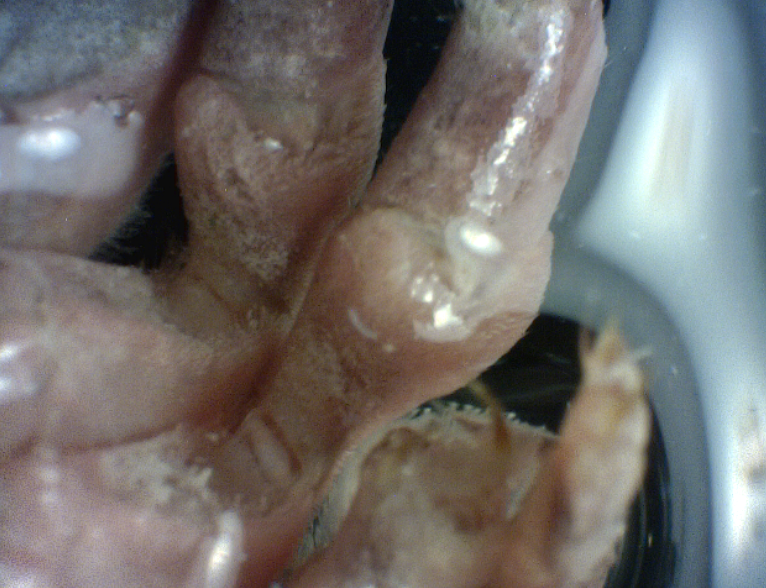 In Stimdromia lateralis, the joints between segments are swollen and knob-liked.
In Stimdromia lateralis, the joints between segments are swollen and knob-liked.
Let's have a closer look!
Microscopic view of the 4th pereiopod of both species. All segments are longer in length and are elongated in the Carpilus convexus. Notice cilia on the pereioped of Stimdromia lateralis. Also note the pincer-liked structure at the tip of the dactylus of Stimdromia lateralis. |